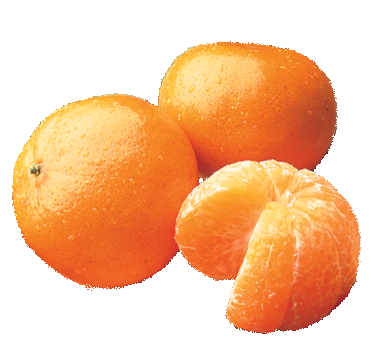Overview
Oranges
Tangelos
Tangerines
Grapefruit
Buyer's Guide to Florida Citrus
Buying Temple Oranges
The Bottom Line
This gorgeous, flavorful eating orange has the perfect balance of sweet and tart. Easy to peel and enjoy, it has a long history of popularity in Florida and around the world.
Appearance
The Temple Orange is a medium–sized fruit with a glossy, orange–red peel. It has a different shape than many oranges: rather than being round like a ball, it's "pudgy" in the middle with a flatter top and bottom.
Taste
Spicy–sweet, with a hint of sparkling tartness, the Temple is one of the more full–flavored, complex citrus fruits you can buy. Did you know that Temple Oranges aren't technically oranges? They're actually a hybrid of a tangerine and an orange, which gives them a great taste somewhere in between the two.
Juiciness
The Temple Orange is medium–juicy...never dry, but not so wet as to be messy to eat.
Seeds
Temples are a famous and beloved variety that does come with some seeds.
Eating out of hand
Temples are a classic, tender, well–flavored eating orange. They're very easy to peel, and segment up beautifully.
Availability
Temples are a mid– to late–season orange, available from late–January to March. They'll still be fresh off the tree in early spring, ready to ship for beautiful gift baskets when many varieties are long gone.
Best Used For
The temple orange is beloved as a great eating and snacking orange. It sections very easily with little pith, making it a great choice for eating in green and fruit salads, though you may want to cut the sections in half first to pop out the seeds. Temple oranges are also plenty juicy enough to be used to flavor desserts, breakfast treats, and other delights.
Why Should I Buy Temple Oranges?
Temple oranges are the perfect choice for buyers who are looking for a highly flavorful eating orange that isn't often found in stores. This is a "foodie's" orange. Temple oranges are also a later–season fruit and are available when other favorites are off the market.
Interesting Facts
Some people mistakenly believe the fruit got its name due to being displayed in temples. However, the Temple Orange is actually named after William Chase Temple, a Florida citrus grower who once owned the Pittsburgh Pirates baseball team.
There are many different subtypes of Temple Oranges, also called "tangors" (for their parents, the "tang"–erine and the "or"–ange). Some have pretty interesting names — for instance, King of Siam, Umatilla, Miyauchi Iyo, and Iyokan.
History
The Temple is thought to have first been discovered in 1896 in Jamaica by a Florida fruit–grower by the name of Boyce. Boyce shipped some budwood (budding branches that are ready to be grafted to another tree) from these trees back to Florida. The resulting fruit eventually came to the attention of William Chase Temple, a prominent citrus grower and merchant. After the citrus fruit began to be grown commercially around 1919, it was given Temple's name.
Florida Fruit Shippers® is a registered trademark of Vegetable Kingdom Inc.
